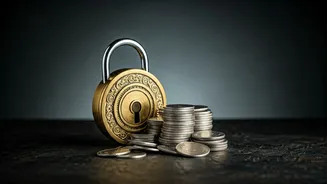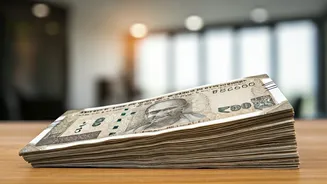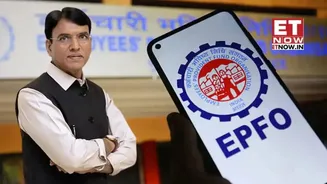Early EPF Withdrawals
The Employees' Provident Fund (EPF) scheme, a cornerstone of financial security for many employees in India, is often perceived as a retirement savings
tool. However, it also permits withdrawals before retirement under specific conditions. Understanding these conditions is crucial for EPF subscribers to manage their funds effectively. Premature withdrawals are not a free-for-all; instead, the government has set strict guidelines for them. The EPF withdrawal rules are framed to safeguard the retirement corpus while simultaneously allowing subscribers access to their funds when faced with unforeseen circumstances or specific financial needs. These regulations define eligibility, permissible reasons for withdrawal, and the withdrawal amount permitted, ensuring a balance between long-term financial security and short-term liquidity requirements. The guidelines also take into account factors such as the employee's contribution, the period of employment, and the specific purpose for which the withdrawal is sought. The rules are periodically reviewed and updated by the Employees' Provident Fund Organisation (EPFO) to accommodate the changing economic environment and the evolving needs of its subscribers. Adherence to these rules is vital to ensure a smooth and hassle-free withdrawal process and to avoid any penalties or complications.
Eligibility for Withdrawals
Eligibility for withdrawing EPF funds before retirement is not a blanket entitlement; it's meticulously defined by various factors. The primary determinant is the reason for withdrawal, as the EPFO has specified a list of acceptable grounds, each having its set criteria. For instance, withdrawals are permitted for purposes like medical emergencies, marriage expenses (self, siblings, or children), and higher education for children. The duration of employment also plays a critical role. Generally, subscribers must have completed a certain period of service to be eligible for partial or full withdrawals. The EPFO might stipulate a minimum employment duration, varying depending on the withdrawal reason. For example, some reasons might necessitate a shorter service period than others. Furthermore, the type of employment—whether salaried or self-employed—might also affect eligibility requirements, although it is less of a differentiating factor. The EPFO's eligibility criteria also considers the subscriber's contribution and the total funds available in their EPF account. Some withdrawals are limited to a percentage of the total accumulated corpus, ensuring the preservation of a substantial portion for retirement. It's essential for subscribers to stay informed about these eligibility criteria and any updates issued by the EPFO, as they can change periodically. Regular monitoring of the EPFO website and circulars helps subscribers ascertain their eligibility and ensures they comply with the prevailing regulations, enabling them to proceed with the withdrawal process seamlessly.
Permissible Withdrawal Reasons
The EPFO permits withdrawals for specific reasons, ensuring that EPF funds are accessible during genuine financial necessities. Medical emergencies are a primary category, allowing subscribers to access funds for their treatment or the treatment of their family members. A certain percentage of the EPF balance may be withdrawn to cover medical expenses. Marriage expenses are another common reason. Subscribers can withdraw funds for their own marriage, as well as the weddings of their children, siblings, or other dependents. The EPFO specifies the amount that can be withdrawn for this purpose, with limits possibly based on the number of eligible events or the subscriber's overall contribution. Funding higher education for children is also recognized as a valid reason. Subscribers can utilize their EPF to cover tuition fees, other educational expenses, or even for purchasing necessary educational equipment. The regulations might impose restrictions on the number of educational withdrawals or the courses that qualify. Another accepted reason is the purchase or construction of a house. Subscribers may withdraw funds to finance the down payment for a home or for construction costs. The amount and conditions vary, often dependent on factors like the subscriber's existing property holdings and the project's status. The EPFO updates these lists, so staying updated is important.
Withdrawal Process and Forms
Navigating the EPF withdrawal process entails several steps, starting with the selection of the correct application form. The EPFO provides different forms tailored to various withdrawal scenarios. For instance, Form 19 is commonly used for final settlements, while Form 31 is often employed for advance withdrawals for specific reasons. Subscribers must choose the form that corresponds to their specific withdrawal needs, ensuring that they comply with the intended purpose, such as medical expenses or home construction. The forms are typically available on the EPFO website or can be obtained from the employer. The next step is the completion of the form, which entails filling out the required personal details, employment information, and the purpose of the withdrawal. Accuracy and thoroughness are crucial to avoid rejection or delays. Subscribers are required to provide essential information, including their EPF account number, UAN (Universal Account Number), and bank account details. Accompanying the form are various supporting documents. These documents depend on the withdrawal reason. For example, for medical expenses, a medical certificate or hospital bills are necessary. For home purchase or construction, documents such as property registration papers or construction estimates might be required. Subscribers must ensure that all the documents are in the correct format and certified as per EPFO guidelines. Once the application form is complete, along with the required documents, it must be submitted to the relevant authority. This usually involves submitting the form to the employer, who then forwards it to the EPFO. Alternatively, in some cases, subscribers can submit the form directly to the EPFO. After submission, the EPFO will verify the application and the provided documents. If everything is in order, the EPFO processes the withdrawal request and transfers the funds to the subscriber’s bank account. This process takes time, and tracking the status of the application is advisable to stay updated.
Impact of Early Withdrawals
Withdrawing EPF funds before retirement can have several financial implications that must be carefully considered. Primarily, it reduces the overall corpus available for retirement, impacting the subscriber's ability to maintain a comfortable lifestyle after retirement. The compounding effect of interest, which is the cornerstone of EPF’s growth potential, is also disrupted. When funds are withdrawn prematurely, the benefits of compounding are reduced, as the withdrawn amount will not accumulate interest over time, leading to a smaller retirement fund. Another key factor is the tax implications of withdrawals. The tax treatment depends on the duration of employment and the circumstances of the withdrawal. For instance, if the employment period is less than five years, the withdrawn amount is typically taxable. However, under specific conditions, such as medical emergencies, some tax exemptions might be available, offering potential relief. The interest earned on the EPF balance is also subject to tax. Subscribers should seek professional financial advice to comprehend the tax consequences of early withdrawals and explore ways to minimize their tax liabilities. Additionally, premature withdrawals can affect eligibility for future benefits and loans offered by the EPFO. The ability to avail of these benefits, such as housing loans or financial assistance, might depend on maintaining a minimum balance in the EPF account. Therefore, it is important to carefully evaluate these implications before making any decisions about withdrawing EPF funds early, considering how such actions could impact long-term financial security.












